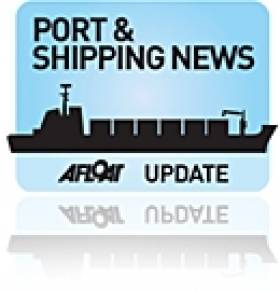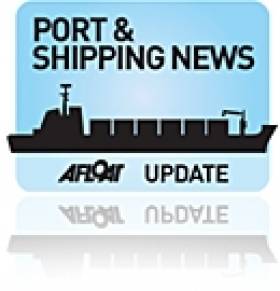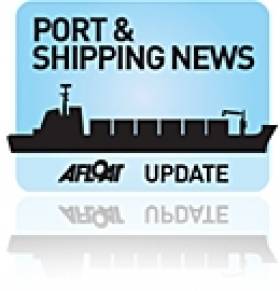Displaying items by tag: Arklow Meadow
18 Injured as Toxic Gas Leaks from Irish Cargoship
#SHIP TOXIC LEAK - Eighteen people are being treated after toxic gas used to kill rodents escaped from an Irish flagged dry-cargoship docked at Warrenpoint, Co Down.
The cargo on board Arklow Meadow had become wet and unstable. The gas is aluminium phosphide, a pesticide used to kill small mammals such as moles and rodents.
Gardaí have been informed of the potential of the chemical compound to drift into Co Louth. It is understood they are going house-to-house in the Omeath area advising householders to stay indoors and close all windows. For more on this story, RTE.ie reports.
Afloat.ie adds that the 2010 South Korean built vessel is owned by Arklow Shipping Ltd and is one of a five 'M' class series.These vessels each have a total grain capacity of 18,110m3 as previously reported, including the Arklow Manor which last month was dry-docked in Dublin Port.
Arklow's Asian Newbuilds
Arklow Shipping (ASL) has turned to the Sekwang Shipbuilding, South Korea for three general cargoships according to www.tradewinds.no
An order has been placed for three 14,200-dwt general cargoships at the yard for delivery from late 2012 to early 2013. The deal includes an option for an extra vessel. To read more click here.
Separate to the Asian newbuild programme is the 4,700 gross tonnes Arklow Bridge (click photo) the latest vessel completed for Arklow Shipping B.V. from the Dutch shipyard of Bodewes B.V.
The Co.Wicklow based company was established in 1966 and has a current fleet of over 40 vessels under the Irish, Dutch and Antiguan flags.
Arklow's Autumn Arrivals
Arklow Shipping Ltd (ASL) await the delivery of the 2,998 gross tonnes newbuild, Arklow Fern, this month from Spanish shipbuilders Astilleros de Murueta SA, writes Jehan Ashmore.
In addition ASL are to introduce during the Autumn the newbuild Arklow Meadow after a delivery voyage from the Far East. At 14,000 tonnes, Arklow Meadow represents the fourth in a series of six 'M' class newbuilds ordered from the Mokpo Shipyard Corporation in South Korea.
The 'M'-class newbuilds have four-holds with a total grain capacity of 18,110 cubic square-metres.The main engine plant is a MaK 6M 43C which
has a 5,400KW capacity through a Jake reduction gear-box fitted to a Rolls Royce controllable pitch propeller producing around 14 knots.
With the entry of these two newbuilds, the fleet rises to 41 vessels. The fleet are divided into two management companies, one based at the shipping operators headquarters in Arklow and the other is controlled through a Dutch subsidiary, Arklow Shipping Netherlands (ASN) B.V. based in Rotterdam.































































